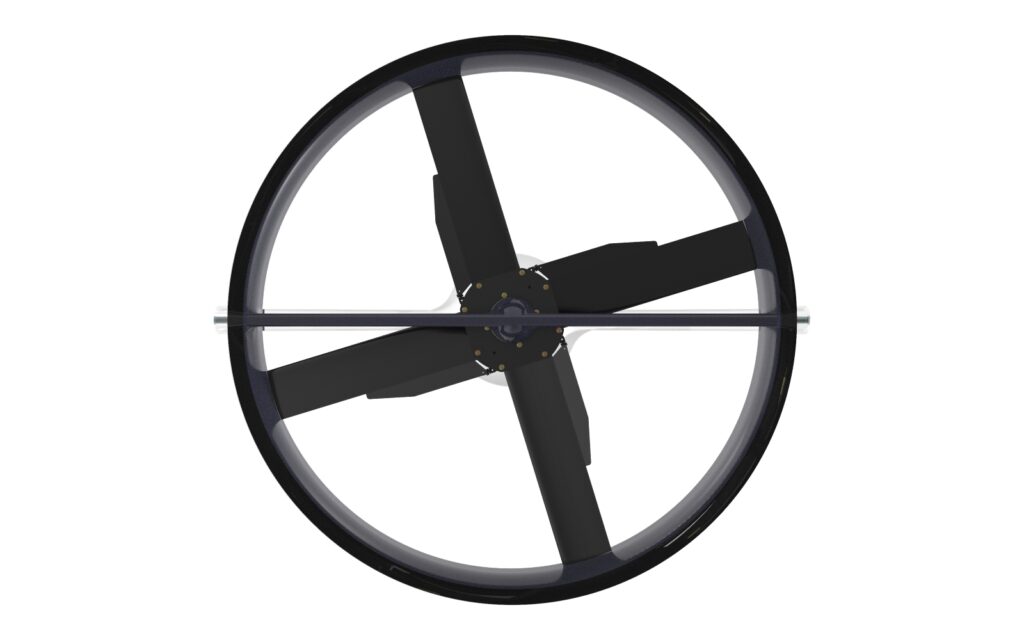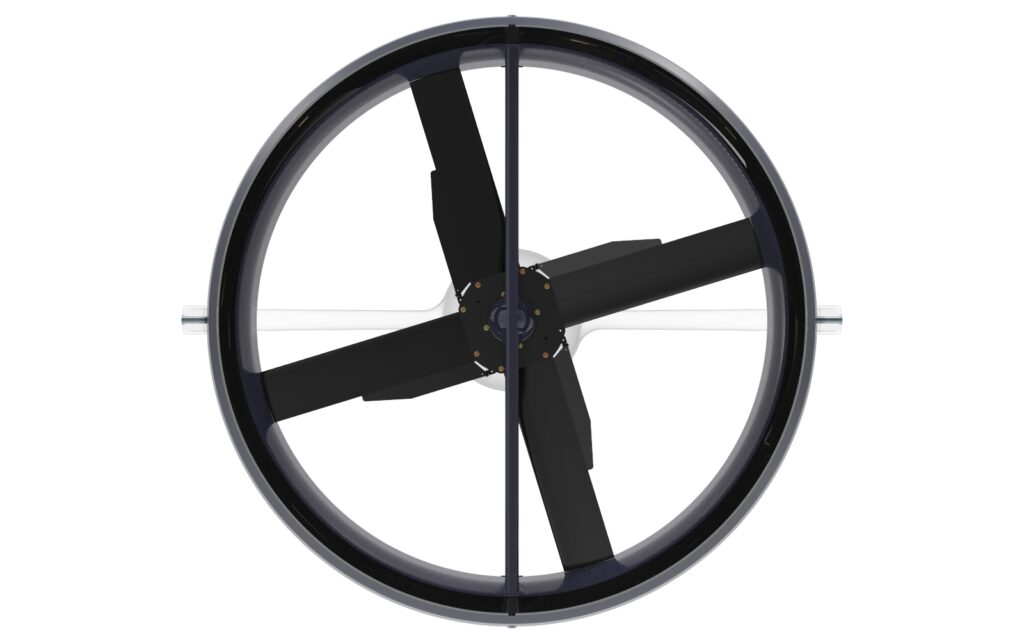


TVP’s common and simple interface enables swapping propulsors in the field to fit the mission. The operator can choose to maximize range, increase maneuverability, or to reduce the signature by choosing the propulsor best suited to mission intent or conditions.
This “family-of-propulsors” approach can significantly increase the utility and survivability of the vehicle, and its value to the operator.
Ducted applications can benefit from our flight-proven ducted propellers, whose tip-loaded blades maximize the efficiency of the ducts
The camber of the fixed-pitch blades can be varied in flight to enable trimming for efficiency between vertical and cruise modes. They can also compensate for engine lag in tail-sitters, and create differential thrust in multicopters – at constant RPM.
It begins with a conversation